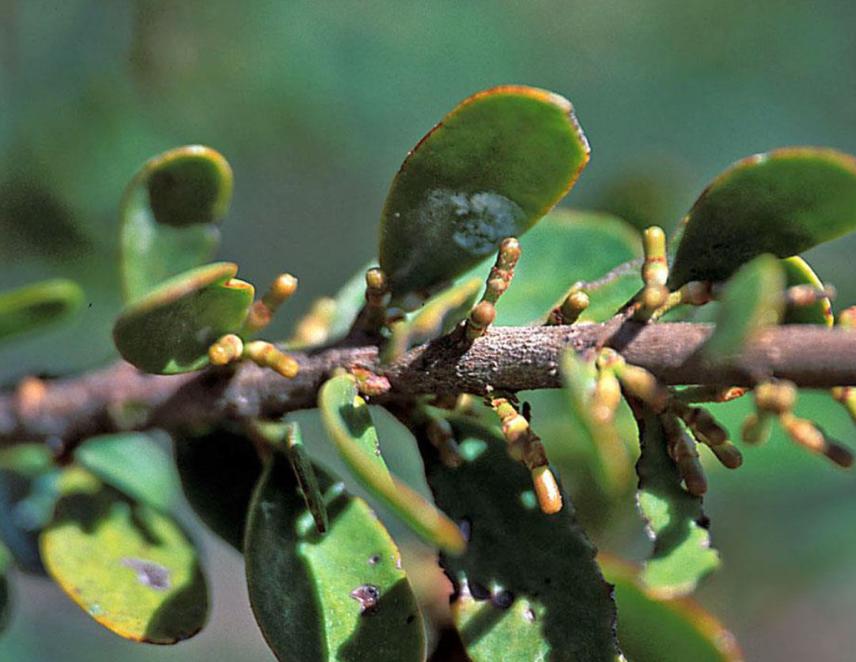Phurpa
This project will create baseline information on diversity of forest diseases and recognize its implications in conservation and management of biodiversity. It is also to create conservation awareness that not only development and anthropological destructions but also pathogens and non- pathogens are threats to the forest conservation approaches.

Taxillus kaempferi
Forest has become an important theme for poverty reduction and Bhutan Government has estimated that forestry sector provides ecosystem services of $14 Billion and sequestration 6.3 million tons of CO2 annually (NEC, 2015). Its rich forest is in unique position, as forest conservation are primary based on Traditional Social Restriction System, Buddhist principles, Gross National Happiness (GNH) vision and less than 9% is under scientific management with huge gaps in Forest Pathology (Wangdi, et al., 2014).
Forest diseases have started in 1980's due to two serious large-scale threat, decline of Abies densa and outbreak of Ips schmutzenhoferi on Pinus spinulosa and Pinus wallichiana and Ips longifolia on Pinus roxburghii (Donaubauer, 1986, 1987, 1993). These outbreaks have shown that diseases and insect pests can pose a great threat to forest management, conservation and to maintain biodiversity (Kirisitis, et al., 2007). However, in conservation efforts discussions of forest diseases is either absent or restricted to animals’ diseases. Forest diseases seldom receive more than a brief mention due to huge lacuna of knowledge base and Forest Pathologist (Tatter, 1981).
Bhutan have been identified as a global biodiversity hotspot and counted among the 234 globally outstanding eco-regions of the world by WWF with 72% of forest cover (NBC, 2015). In 2014, Department of Forest have estimated 0.7% as annual forest degradation rate which will challenges 60% forest of in perpetuity as pledge by Constitution, carbon neutral commitment to UN and international conventions. Bhutan still lack forest diseases inventory as forest protection activities are concentrated only to wildfire and anthropological activities (Tshering & Chhetri, 2000). Forest diseases research is in infancy and there is a huge lacuna of knowledge base. It is henceforth, imperative to enrich the current knowledge on forest diseases in this Himalayan country.
This project will create baseline information on diversity of forest diseases and recognize its implications in conservation and management of biodiversity. It is also to create conservation awareness that not only development and anthropological destruction but also pathogens and non-pathogens are threats to the forest conservation approaches. This project is justified to detect new forest diseases in which this early detection will allow timely eradication or control action, minimize the losses of forest value and limit the cost of control. This research outcome is expected to fill up the existing research gap on forest pathology in Bhutan.
Detection programmes (i, Remote Sensing, GIS and Area Sampling; ii, Field surveillance) and Purposive sampling (i, Questionnaire; ii, Key Informant) techniques for detection of forest diseases are analysed and adopted for this project. Hence, this project will be helpful in maintaining healthy forest for rich biodiversity, national pledges and international conventions in long term.